I concur sir. However, this would also adversely effect the use of the Stuka in its prescribed dive-bombing role turning it into a marginal performer in some cases. Of course, this would not be unusual as many aviators must adopt defensive tactics that hinder their battlefield effectiveness in a tactical ground support role - as the ground forces always are able to counter what is initially the usual significant advantage of the aviator. Of course the Luftwaffe improved the Stuka with more armor and better “tank-busting” armament. But it was never able to terrorize its opposition as it did with such mastery of the early days in the West…
Good pictures Lib, good pictures.
Education in history of war is not and never was just a matter of gaining new understandings, my dear Mr. Nickdfresh. It is also a process of unlearning or getting rid of false impressions, of fake misconceptions about factual usage of a certain weapon system during the war which are sorrowfully embedded in general population.
For that reason we have listed and analyzed a couple of misconceptions, more precisely persistent and puzzling myths about factual usage of the Ju 87 during the WW2 that are particularly widespread even today, and we trust that this tiny string of posts has helped to clear them away. Without pretending to supply a complete study, we suggested a number of photos and facts that the serious student can use to dig more deeply into this matter.
The persistence of the old attitude that the Ju 87 was used only as a slow and clumsy dive-bomber is not easy to explain. Perhaps it is simply a case of a general tendency to confuse already known theoretical ideas with factual realities after the accurate evidence has vanished. Whatever the situation may have been, our main task here still is provision of the genuine photo-materiel, capable to debunk those myths.
A useful analytical approach in every case connected with usage of certain type of weaponry is to ask: in terms of its effect rather then of its declared purpose, what was its real function? And if the answer is annihilation of enemy units with minimum loss, combination of preserved empirical observations with known technical potentials of the weapon system will be capable to provide the right answer. 
Yes, my dear Mr. Nickdfresh, you are absolutely right – if point targets were in front of German units, thus representing an unsurpassable obstacle for them, and if there were no active AAA units in a given area, good old Ju 87 indeed dived and conveyed the lethal load right in the kisser:

Destroyed Soviet anti-tank position, vicinity of Simferopol, 1941
But in case when four batteries of excellent 85 mm Soviet heavy anti-aircraft guns were emplaced around the target (for example that poor railway station of Pervomaisk), operated by the Soviet Army’s AA shooters very best (guys which from a 3 km distance could clip buttons from a vest), Stuka crews were not inclined to penetrate through 7 km wide barrage zone to reach that dead arc in the vertical plane and then to employ their well-known deadly Sturzflug just to keep their well-known name. That was extremely dangerous.

Cross section of the field of fire for the 85mm M1939 antiaircraft gun
They approached their possitions from the treetops instead, and disabled them with their own low-level Steckrübenwurf tactics, two years before the Fw 190 did the same. 
After that, they straffed unfortunate Soviet trains there with their guns and small bombs and their ammo flow out in kind of a spray, so everything round got very peppered…
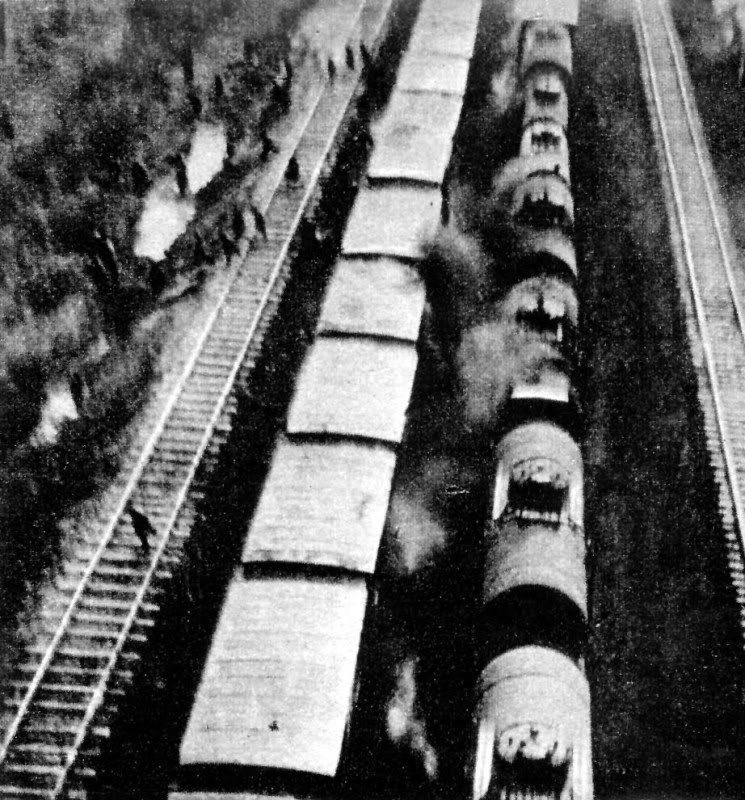
Attack of the Ju 87, Pervomaisk - 1941
… so when they later counted their score they got 24 bulls eyes, four magpies and a shepherd! 
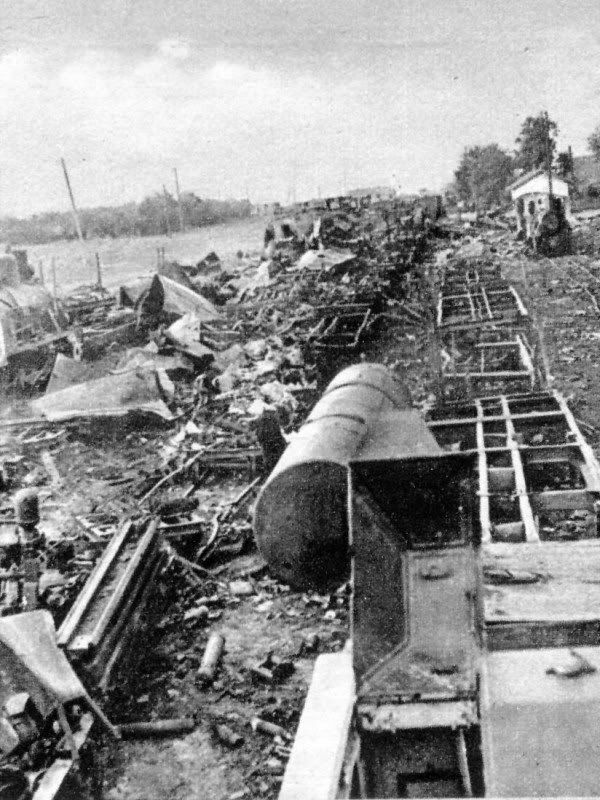
Remnants of the Soviet train destroyed by Stukas – Pervomaisk, 1941
Subsequently, out of a clear blue yonder, a lonely Soviet fighter joined their group; obviously, he was just a poor recruit. Thus they peppered him with their rear guns as well, in a real course how to shoot. At fifteen meters their MGs kicked, and went off with a noise like a blizzard, and down came the poor devil, looking fair surprised, with a couple of nice holes right through his gizzard!

Unfortunate Soviet I 16 fighter, downed by Ju 87 rear gunners – Pervomaisk, 1941
Then after the ball, like a carefree rabbits, they rushed down the field full of pride: nobody stopped them and they boldly scored without losses for their own side. With their actions, they revealed a secret to their High command about their intrinsic necessity, emphasized in that old, truly beautiful German song:
Treat me nice
Treat me good
Treat me like you really should
'Cause I’m not made out of wood…
Original is available here:
http://www.youtube.com/watch?v=_byoKAi4CJE&feature=related
However, their message was lost in cacophony of ignorance, empty pride, and sheer megalomania…
And so, my dear Mr. Nickdfresh, the 4th of August 1941 remained in history as their unequaled heyday. I am assuring you that on that very day Ju 87s terrorized their opponents with such a mastery that even the USAF officers, who analyzed those forgotten German snapshots captured during the operation “Dick Tracy”, were absolutely stunned.
To be continued…
Well, despite being old design the I-16 wasnt easy to shot dow by a single 7,92mm Mg, must be a lucky shot.
Early experience of the Ju87 in Poland and France between 1939 and 1940, had the plane in its element: unopposed in the air, and a true shock weapon against mostly unprepared ground targets. The first time it was used in defended airspace, was in the early days of the Battle of Britain in 1940. The RAF Hurricanes and Spitfires made no attempt to dogfight it: they quite wisely waited until it was committed to its attacking dive, then followed it down as a stable target. ISTR the Stukas sustaining ~50% casualties in this manner. There is debate as to whether this led to their withdrawal from the BoB, or they were redeployed in preparation for Barbarossa. Whichever is the case, their effectiveness had been sharply diminished by the use of the correct tactics against them. As for low-level bombing missions, the Brits later adapted the Hurricane in this role, after it had outlived its usefulness as a fighter. Not quite the same accuracy as the DB method, but tactically effective nonetheless.
Cheers,
Cliff
What does that mean in real terms? I read that only 67 Stuka were lost in July and August which meant their inventory numbers remained stable at about 400. Less than 10% losses per month is what it looks like. From what I’ve read the Stuka were withdrawn for the proposed operation Sealion, but when that was canceled, they were sent eastward in preperation for Barbarossa.
Excuse me, my dear Mr. Panzerknacker, but since when concentrated fire of 6 rearward-looking defensive MGs, as well as MG bursts from a couple of Stukas attacking from his back are only lucky shots? Yes, yes - I know: independent observers had not confirmed those German claims. However, for me those happenings are representing an example of the tactical excellence and a genuine mastery in combat flying. 
And please, don’t understand me wrongly – I am not claiming that the Polikarpov I 16 was a bad airplane. On the contrary! In skilled hands, that tiny but incredibly maneuverable machine was completely capable to overpower Ju 87 in every situation, but it seems to me that poor fellow simply was not exceptionally proficient in his job…
On the other hand, I must say that I always was deeply impressed by the fact that practically the most efficient German airplane used against Soviet air force on the very first day of Operation Barbarossa (June 22nd, 1941) was our good old birdie. Amongst 78 Luftwaffe airplanes lost in combat on that very day there were only 2 Ju 87 Stukas. And if your next question is just what had they achieved… well, they - yet again reportedly! - successfully eradicated some 800 Soviet machines… Bulk of them on the ground, of course. But – of course, reportedly! – certain number of unfortunate Soviet machines was destroyed in aerial battles as well.
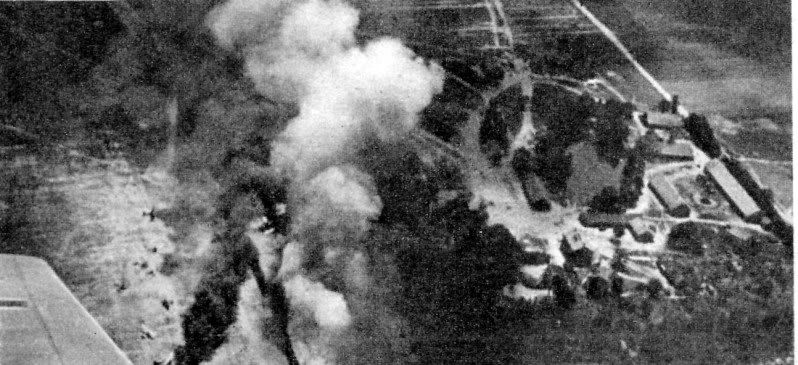
Ju 87s are attacking Soviet airfield – June 22nd, 1941
In view of the fact that you evidently like those unduly forgotten Polikarpov machines, here are some snapshots from aforesaid period that are connected with them and our old birdie as well:

Polikarpov I-15 destroyed by German Stukas, June 22nd – 1941
Numerous Soviet airplanes were heavily damaged on that day too, so they were taken out of action as well:

Heavily damaged I-15s, June 22nd – 1941
Advance of the German troops was so fast that damaged Soviet airplanes remained almost intact right on the spot:
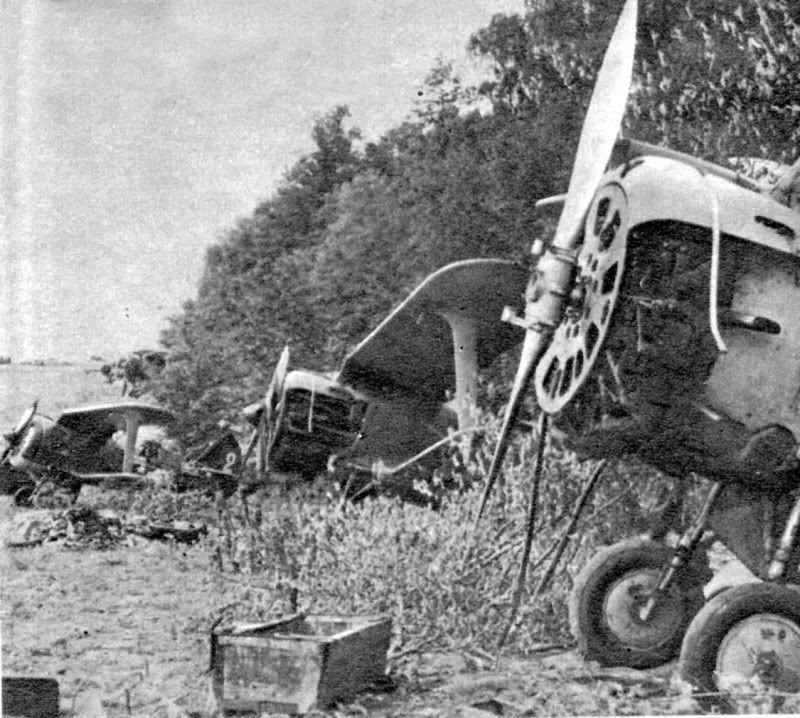
Polikarpov I – 15 machines, heavily damaged by Stukas – unknown Soviet airfield
However, numerous examples were completely destroyed on their domestic airstrips:
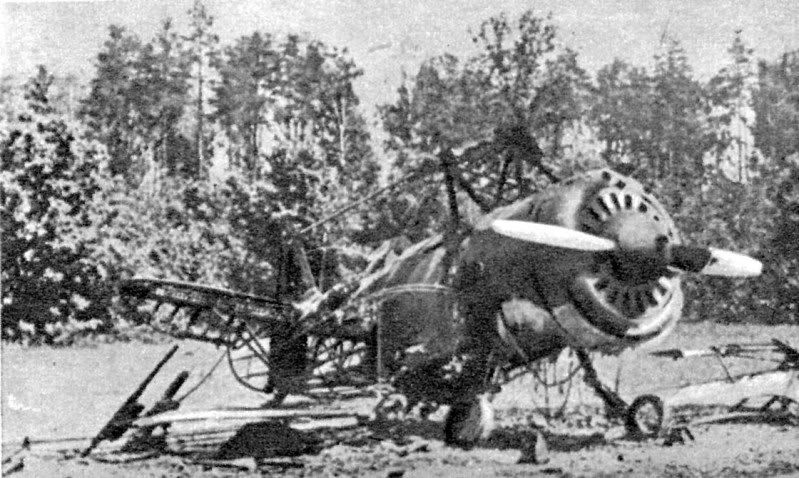
Completely destroyed I – 15, June 22nd – 1941
Some of them somehow managed to start, but attacking German aircrafts (counting Stukas as well!) downed them easily, since they were outnumbered by the waves of incoming enemy airplanes:
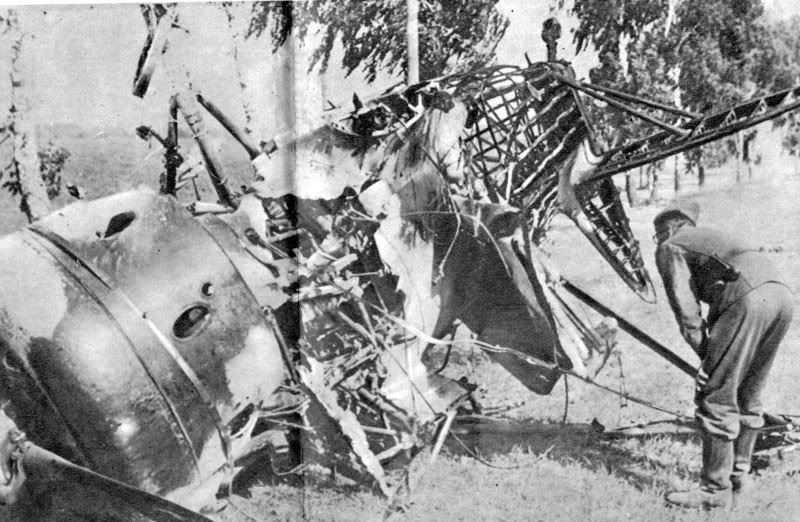
Downed Polikarpov I-15
Of course, Polikarpov I-15 was not the only type of aircraft that suffered on that day. Numerous other types were destroyed by bombs delievered by our old birdie as well, for example this one:
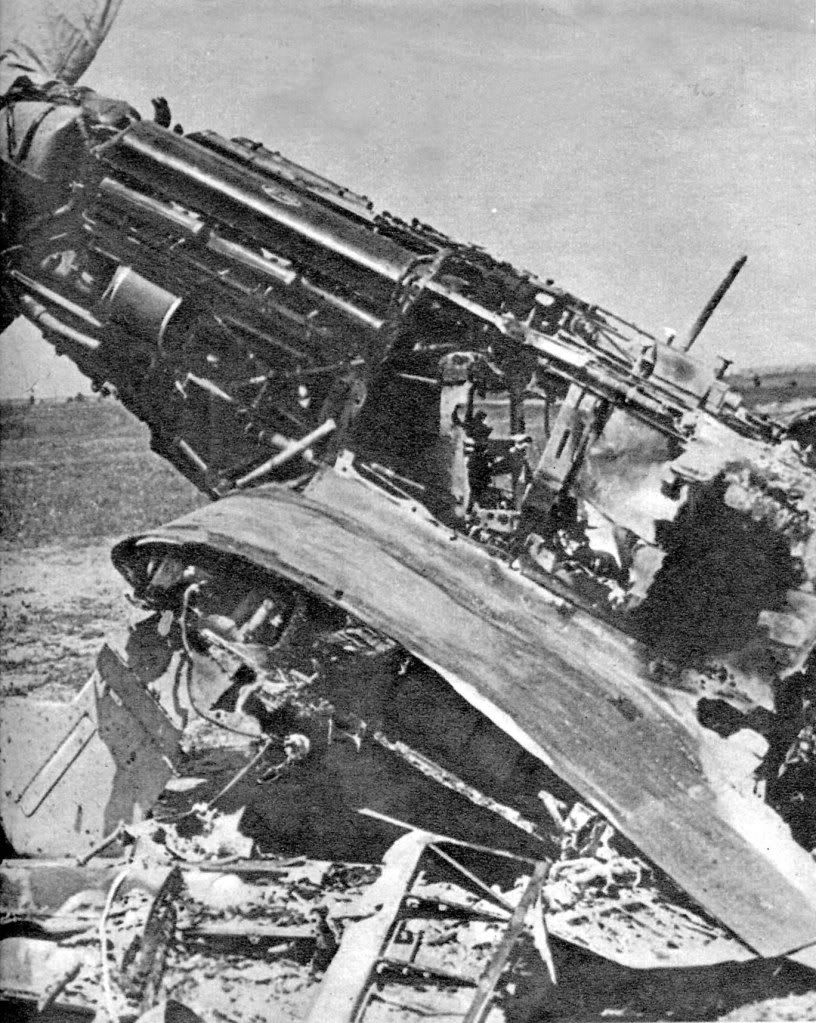
Destroyed MiG – 1, June 22nd – 1941
If you are looking for some motivational and inspirational music to keep your head refreshed during the contemplation about this intriguing success of our old, pants-equipped birdie, my dear Mr. Panzerknacker, than look no further - here is one especially suitable for these purposes:
http://www.youtube.com/watch?v=E5avteqfLxc
Reportedly it was always capable to rise the spirits of the Prussian (von Popovitz) branch of our family in time of need… 
And now you will excuse me for a moment, honorable ladies and gentlemen, I have to scan some additional materials for our distinguished thread.
Oh, silly me – I almost forgot this:
The RAF Hurricanes and Spitfires made no attempt to dogfight it: they quite wisely waited until it was committed to its attacking dive, then followed it down as a stable target.
This is highly intriguing issue, my dear Mr. CliSwe. Would you be so kind to elaborate this matter a little bit more intensively? You see, as far as I know Hurricanes and Spitfires were the most efficient against our old birdie when they applied numerous variants of the dogfight tactics. After all, from the strict and stringent technical point of view, that was quite understandable – their specific wingload, for example, was significantly better.
Personally, I am deeply interested for that specific anti-Stuka tactics used by Flying Officer David M.Crook against notorious Stuka-pilot Friedrich-Karl Freiherr von Dalwigk zu Lichtenfels - commander of the I/Sturzkampfgeschwader 77. Untill now I was completely unable to acquire any reliable information about that intriguing occurrence.
I am assuring you that nothing shall be neglected on our part to render us fully worthy of your confidence. 
And now – back to hard and deeply boring work… :roll:
In the meantime, honorable ladies and gentlemen, as always – all the best!
I could not agree with you more here, sir. Your contributions to this site have done much to get rid of false impressions and misconceptions. And I appreciate your most excellent posting as every one is informative and detailed. I indeed look forward to reading your posts and think you are a great credit and resource to this site…
For that reason we have listed and analyzed a couple of misconceptions, more precisely persistent and puzzling myths about factual usage of the Ju 87 during the WW2 that are particularly widespread even today, and we trust that this tiny string of posts has helped to clear them away. Without pretending to supply a complete study, we suggested a number of photos and facts that the serious student can use to dig more deeply into this matter.
I would indeed like to know more about the upgraded Stukas and their use as “tank-busters” on the Eastern Front. The Stuka was a marvelous, agile aircraft and the Luftwaffe was visionary in transposing the use of dive-bombing from fleet naval air arms (like the US Navy, who influenced the doctrine of tactical support greatly as German military attaches did love to observe the exploits of naval aviators here in the 1920s and early 30s) to point targets (larger than destroyers) on land such as tanks and artillery batteries…
The persistence of the old attitude that the Ju 87 was used only as a slow and clumsy dive-bomber is not easy to explain. Perhaps it is simply a case of a general tendency to confuse already known theoretical ideas with factual realities after the accurate evidence has vanished. Whatever the situation may have been, our main task here still is provision of the genuine photo-materiel, capable to debunk those myths.
Slow she might have been. But “clumsy?” Never! The Stuka was an agile carrion ready to pounce and tear the flesh from her plodding enemies on the ground. But the aircraft did have its vulnerabilities that were masked by the ineptness or disadvantages of her adversaries in the West. I do recall reading (a very long time ago) in Len Dalton’s “Blitzkrieg” that a squadron of French (somewhat obsolete) P-36 Hawks managed to inflict heavy losses, in at least one instance, on a flock of Stukas --which belied their reputation of sheer terror and omnipotence in the perception of the French and British ground forces. The problem was that the RAF had few fighters to spare and the French Armée de l’Air suffered a rapid advance of the West Heer on her Western-most airfields resulting in a severe disruption of coherent fighter opposition to the Luftwaffe. The British of course were overextended as they had to fly from the Isles and burn their fuel before engaging the Luftwaffe. A problem that would conversely beset the Germans in the Battle of Britain…
A useful analytical approach in every case connected with usage of certain type of weaponry is to ask: in terms of its effect rather then of its declared purpose, what was its real function? And if the answer is annihilation of enemy units with minimum loss, combination of preserved empirical observations with known technical potentials of the weapon system will be capable to provide the right answer.
Yes, my dear Mr. Nickdfresh, you are absolutely right – if point targets were in front of German units, thus representing an unsurpassable obstacle for them, and if there were no active AAA units in a given area, good old Ju 87 indeed dived and conveyed the lethal load right in the kisser:
Destroyed Soviet anti-tank position, vicinity of Simferopol, 1941
But in case when four batteries of excellent 85 mm Soviet heavy anti-aircraft guns were emplaced around the target (for example that poor railway station of Pervomaisk), operated by the Soviet Army’s AA shooters very best (guys which from a 3 km distance could clip buttons from a vest), Stuka crews were not inclined to penetrate through 7 km wide barrage zone to reach that dead arc in the vertical plane and then to employ their well-known deadly Sturzflug just to keep their well-known name. That was extremely dangerous.
Cross section of the field of fire for the 85mm M1939 antiaircraft gun
They approached their possitions from the treetops instead, and disabled them with their own low-level Steckrübenwurf tactics, two years before the Fw 190 did the same.
After that, they straffed unfortunate Soviet trains there with their guns and small bombs and their ammo flow out in kind of a spray, so everything round got very peppered…
Attack of the Ju 87, Pervomaisk - 1941
… so when they later counted their score they got 24 bulls eyes, four magpies and a shepherd!
Remnants of the Soviet train destroyed by Stukas – Pervomaisk, 1941
A testament to the flexible command structure of the Luftwaffe, and their faith in their very well trained pilots of the early war period in allowing them the autonomy to deviate from operational plans and press home the attack while exploiting the Soviet weaknesses in short-to-intermediate range anti-aircraft artillery…
Subsequently, out of a clear blue yonder, a lonely Soviet fighter joined their group; obviously, he was just a poor recruit. Thus they peppered him with their rear guns as well, in a real course how to shoot. At fifteen meters their MGs kicked, and went off with a noise like a blizzard, and down came the poor devil, looking fair surprised, with a couple of nice holes right through his gizzard!
Unfortunate Soviet I 16 fighter, downed by Ju 87 rear gunners – Pervomaisk, 1941
Yes. He must have been the “bottom of the barrel” as the colloquial American saying goes. Any sane pilot always begins his attack with a wingman to draw fire and to cover his rear end. He, or she, must have been a desperate young pilot trainee…
Then after the ball, like a carefree rabbits, they rushed down the field full of pride: nobody stopped them and they boldly scored without losses for their own side. With their actions, they revealed a secret to their High command about their intrinsic necessity, emphasized in that old, truly beautiful German song:
Treat me nice
Treat me good
Treat me like you really should
'Cause I’m not made out of wood…
Original is available here:
However, their message was lost in cacophony of ignorance, empty pride, and sheer megalomania…
And so, my dear Mr. Nickdfresh, the 4th of August 1941 remained in history as their unequaled heyday. I am assuring you that on that very day Ju 87s terrorized their opponents with such a mastery that even the USAF officers, who analyzed those forgotten German snapshots captured during the operation “Dick Tracy”, were absolutely stunned.
To be continued…
I have no reservation that you are absolutely correct. It was in fact the German Reichswehr/Wehrmacht that, out of the artificially imposed weaknesses of the Versailles Treaty, was far more willing to explore new ideas that were often stifled in the militaries of the West (members of whom often came up with those ideas) --and by a certain Soviet “generalissimo” that feared any competition of leadership…
Cheers!

And yet, it failed in the end. For you see, single intruders, while damaging, cannot do much real overall damage. That takes a far more serious effort.
The answer to such low level tactics? Flak towers (as the Germans used in their cities), barrage balloons, and large number of light AAA (as the Germans figured out for defending their air bases) The towers would have to be mobile, and the balloons numerous and easy to real in and move, and the AAA tracked and numerious. I guess the Russians felt for the amount of damage they were receiving it was not worth the effort.
Deaf
Beware the contemporary accounts (exaggerated for propaganda purposes, methinks):oops: The following gives a more balanced picture:
"Baron von Richtofen had a blot to remove from his escutcheon in the spring of 1941. The architect of the close air support doctrine of the Luftwaffe, he had failed miserably during the Battle of Britain. His vaulted i Stukas had been shot to pieces on Eagle Day and had done no better on August 15. Three days later, on August 18, the Stukas tried again. Richtofen sent up four Ju-87 groups, which attacked the British airfields at Gosport, Thorney Island, and Ford, as well as the radar station at Poling on the southern coast. Thirty Stukas were lost or critically damaged in the attack. One group, I/StG 77, lost twelve of its twenty-eight aircraft, and six of the survivors were so badly damaged that they only just managed to reach the Continent. Such losses were more than could be tolerated. Eighth Air Corps was withdrawn from the battle." [Eagles of the Third Reich (Samuel W. Mitcham) p.115].[/i]
It’s clear, from the foregoing passage, that the “~50% losses” were the tally for I/StG 77 on that day, and not a sustained rate for the campaign. That said, it reinforces the point I made that - excellent CAS platform though it was - it couldn’t survive in contested airspace:
“The “Sturzkampfgeschwader” faithfully supported “Generalfeldmarschall” Erwin Rommel’s “Deutsches Afrikakorps” in its two year campaign in North Africa, helping it achieve considerable success. However as the tide turned and Allied air power grew in the autumn of 1942, the Ju 87 became very vulnerable, and losses were heavy. The entry of the Americans into North Africa during Operation “Torch” made the situation far worse: the “Stuka” was obsolete in what was now a fighter-bomber’s war. The Bf 109 and Fw 190 could at least fight on equal terms after dropping their ordnance , but the “Stuka” could not. The Junkers’ vulnerability was demonstrated on 11 November 1942 when 15 Ju 87Ds were all shot down by USAF P-40Fs in minutes.” [Weal 1998, p. 65.] .
Cheers,
Cliff
Excuse me, my dear Mr. Panzerknacker, but since when concentrated fire of 6 rearward-looking defensive MGs, as well as MG bursts from a couple of Stukas attacking from his back are only lucky shots? Yes, yes - I know: independent observers had not confirmed those German claims. However, for me those happenings are representing an example of the tactical excellence and a genuine mastery in combat flying.
Evidently 6 MG 15 are is more effective than one. :rolleyes: I do believe that a aimed pilto shot could be by far more effective that the sole rear machinegun defense.
Stuka is a tactical weapon. How are ‘Flak Towers’ and ‘barrage balloons’ going to fit into Soviet offensive operational doctrine?
Cliff these seem like anachdotle [sp] information. Heres a reference from German sources covering the months of July and August 1940.
http://forum.axishistory.com/viewtopic.php?t=80594&postdays=0&postorder=asc&start=0
by Pips on Wed Jun 29, 2005 7:30 am
the details of the 16th August raid were as follows:
St.G 2 hit Tangmere at 1300hrs, destroying two hangers and badly damaging three others as well as the workshop, fire hydrants and pumphouse, all of which received direct hits; stores, sick quarters, the officers mess and the command post were partially hit causing severe structual damage, as well as destroying seven Hurricane fighters, six radar-equipped Blenheim fighters of teh Fighter Interception Unit and a Magister trainer on th ground. Forty motor vehicles were also destroyed.
The attack did cost St.G 2 nine Ju87’s shot down and a further three damaged, althpough the Stuka’s did shoot one Hurricane down, that of P/O Fiske of 601 Squadron.
As can be seen the Stuka’s did substantial damage to Tangmere in spite of the losses suffered. The details of the damage is from the RAF’s damage report by the Station Enginerering Officer.
As far as losses generraly goes the Ju87 units were active over both Channel convoys and southeast England from July. Losses suffered over the two month period were:
July 14 - 1; July 20 - 2; July 25 - 1; July 27 - 1; July 29 - 4; August 11 - 1; August 12 - 5; August 14 - 4; August 15 - 7; August 16 - 9; August 18 - 14.In that two month period the Ju87’s…
sank 1 ainti-aircraft ship - the Foylebank
sank 1 destroyer - the Brazen
damaged five destroyers - Beagle, Boadicea, Bulldog, Boreas, Brilliant
forced the Dover Destroyers to be withdrawn
sank 4 small warships - Warrior II, Kingston Galena, Roding, Gulzar
sank 14 merchant ships
damaged 29 merchant ships
forced Channel convoys to be halted during daylight
damaged 7 airfields - Detling, Hawkinge, Lympne, Tangmere, Lee-On-Solent, Ford, Thorney Island
destroyed 49 aircraft on the ground - 22 at Detling, 15 at Tangmere, 12 at Lee-On-Solent
damaged three radar stations (putting them off air for a short period) - Ventnor, Poling, Dover.Overall during the two month period the Ju87’s suffered a 7.9% loss rate - hardly the massive losses the British claimed. And achieved an remarkable amount in that period.
BTW I was referencing the critical war in the east from 1941-43 since this is the heart of WW-II in Europe. Out side of that context its clear the lack of effective german tactical air training lead to a progressive disintergration of the air defense leading to less and less effective usage of all bombers types.
ubc, I haven’t the slightest doubt that the above accounts are accurate and credible. OTOH, Mitcham is a respected source (as is Weal), although the very weight of their output makes one wary. For example, I’d nitpick Weal regarding Rommel’s rank (he wasn’t promoted to Field Marshal whilst commanding a Corps) and the organisation which flew P-40s (the USAF did not come into being until after the war). Their main message, however, remains irrefutable: Stuka attrition could not be sustained over Britain. Whatever face-saving OKW explanation was offered (preserve the airframes for Sealion, send them east for Barbarossa, etc.) they were in any case withdrawn from the campaign. IMHO this indicates, not (as you remarked) a failure of tactical understanding, but a realisation that the Ju 87 was being misused in a strategic campaign. The Luftwaffe in any case was not equipped for a strategic offensive: it was a superb tactical air force which cooperated splendidly with fast-moving ground forces. On its own, it lacked the ability to eliminate the RAF in British airspace.
Cheers,
Cliff
Cliff my reference to 'lack of effective german tactical air training ’ , was more to do with the progressive loss of Luftwaffe flying hours through the mid war years that progressively diluted the effectiveness of their pilots. By comparison the Allied figures climed so that by wars end they were looking at 600-800 flying hours compared to about 50hours for the late war Luftwaffe training.
But no argument about the miss application of Stuka assets in strategic airwar…which was alien to their war training. When Combined with army assets the Stuka was a vital part of korps warfare in the early years. German sources [Schenk for example] report the Luftaffe with drew their Stuka to make sure the inventory was ready for ground support for ‘Sealion’…but it could just as easily been seen for ‘Barbarossa’.
As usually, I am late again, honorable ladies and gentlemen. Nevertheless, I shall try to compensate that sorrowful verity with a pair of forgotten pictorial artifacts. 
I could not agree with you more here, sir. Your contributions to this site have done much to get rid of false impressions and misconceptions. And I appreciate your most excellent posting as every one is informative and detailed. I indeed look forward to reading your posts and think you are a great credit and resource to this site…
Thank you very much for that truly outstanding personal appraisal, my dear Mr. Nickdfresh. Yes, as brilliantly observed some 25 years ago by a renowned historian, Mr. David Lowenthal, the past always is a foreign country. However, it seems to me that in recent times we are constantly facing a new, quite symptomatic phenomenon of our epoch, brought about probably by the combination of increased human numbers, decreased number of open-source libraries and general lack of human patience. Result of that dreadful combination has been the incipient vulgarization of history. :roll:
Factual History - the very basic concern of our distinguished web-site - is both accomplishment of knowledge and human persistence, work of the dusty hands and a movement of the spirit, the traditional but somehow forgotten property of modern man, of his ideas, his material artifacts taken in sum to be a guide to life. Dionysius is still telling us the ancient truth that popular History basically is Philosophy taken by examples, with philosophy suspended between the I-believe of theology and the I-know of science. But above all History is a birthright which we all inherit, the heritage man carries with him on his short earthly voyage.
That’s why we invite all those whose interests lie in this marvelous field - whether as contributors or pure readers, to join us in this marvelous venture. 
Slow she might have been. But “clumsy?” Never!
Thank you for this comment, my esteemed colleague. In that case my job in this thread is practically done. Yes, the Ju 87 Stuka was a little bit slow, but also a very agile, maneuverable airplane, popular with crews due to its unrivalled bombing accuracy, ability to operate in unprepared airfields, easy maintenance, and good rough-field performance. Later we will analyze those aspects as well. But before that, we need to keep all of our already given promises. 
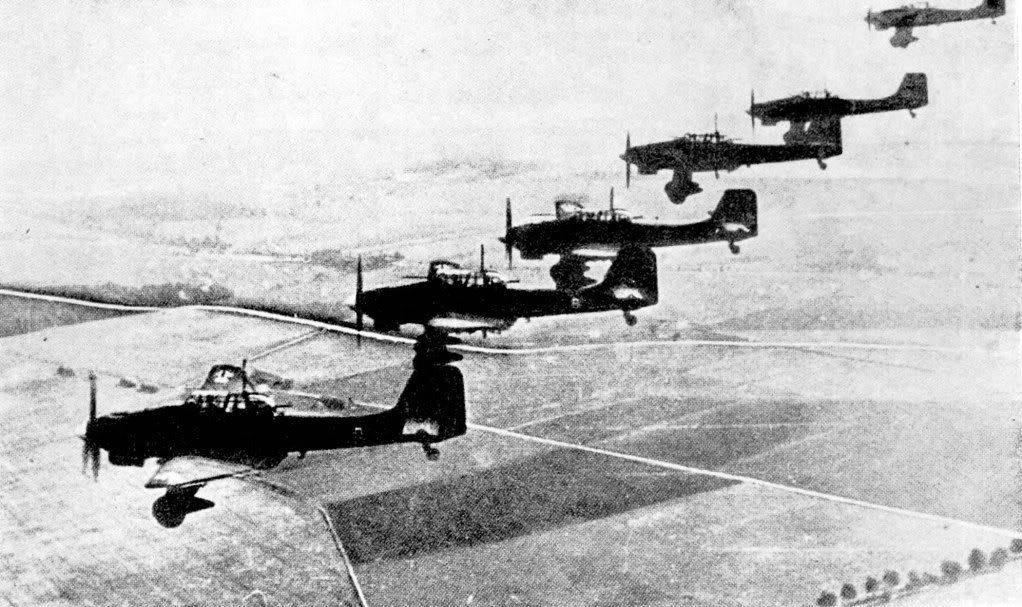
Ju 87-B, USSR - 1941
During the initial phase of war with the Soviet Union, Luftwaffe was inundated with constant demands of the Army for close air support. Although those demands were far greater than Luftwaffe’s resources could bar, the Stukas were exceptionally active and achieved the peak of their success during the battle of Smolensk, when they persistently annihilated all observable elements of the encircled Soviet units:
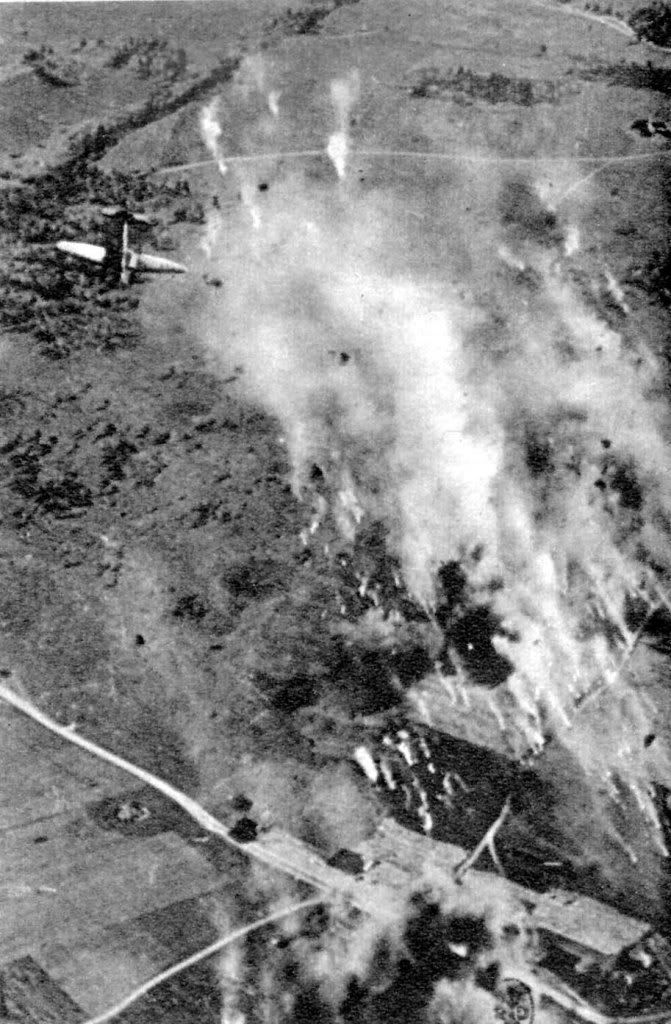
Ju 87 is attacking encircled Soviet units – vicinity of Smolensk, 1941
Saturation of the combat-zone was absolutely outstanding – different bombs were accurately scattered over a surface of several hectares:
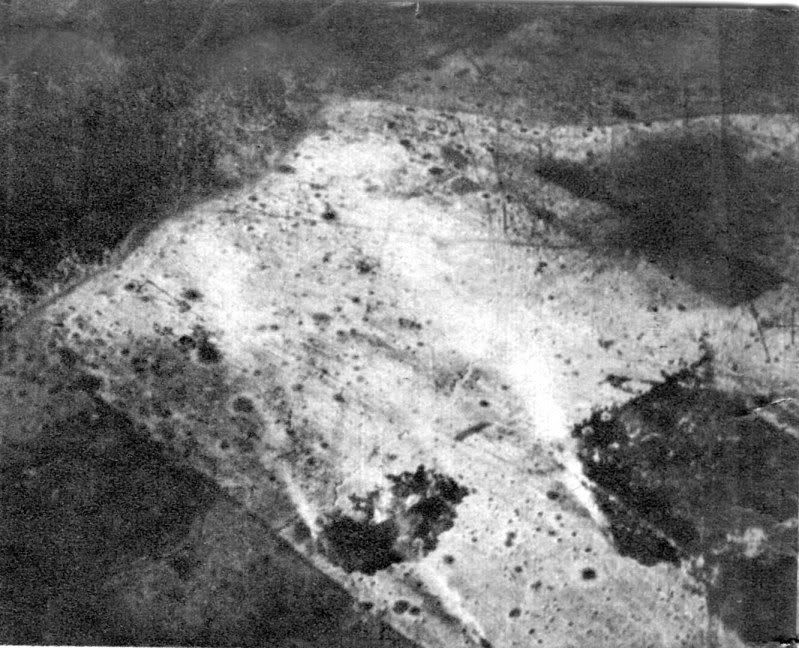
Smolensk, 1941 - aerial photo of the bombing range showing the numerous bomb craters
Result was absolutely stupenduous – more than 5000 different vehicles were completely exterminated by agitated Stuka attacks:
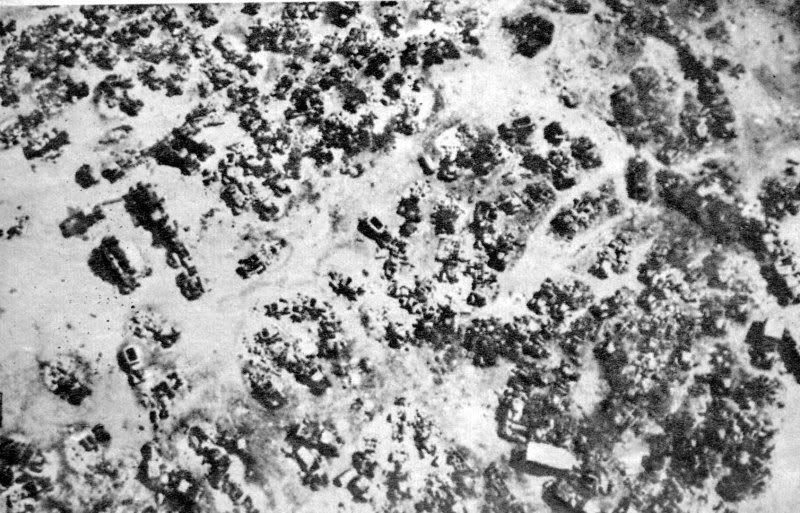
Destroyed Soviet vehicles - Vicinity of Smolensk, the 4th of August, 1941
German tactics was indeed open-minded and object-oriented one – Soviet anti-aircraft units represented especially important and accentuated objects. They were mainly chased and attacked while on march, thus they were unable to create an useful defense perimeter for their own troops:
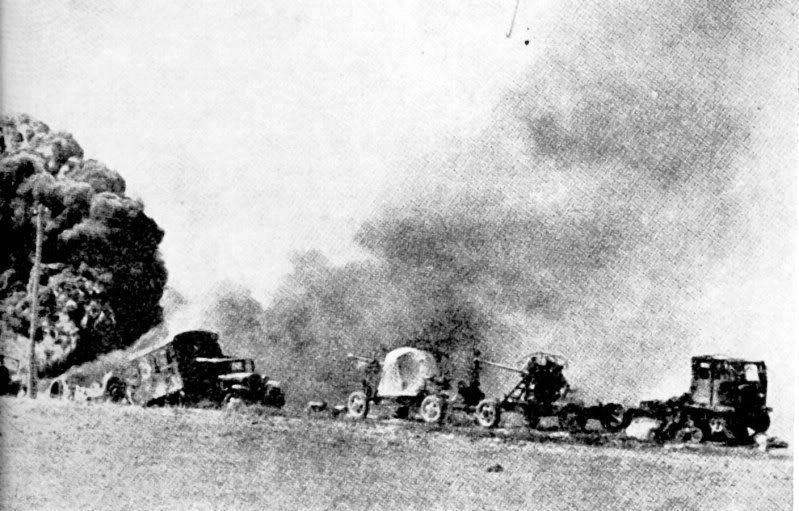
Destroyed Soviet light AA artillery – vicinity of Smolensk, 1941
The final results were able to realistically paint the grim picture of War’s toll:
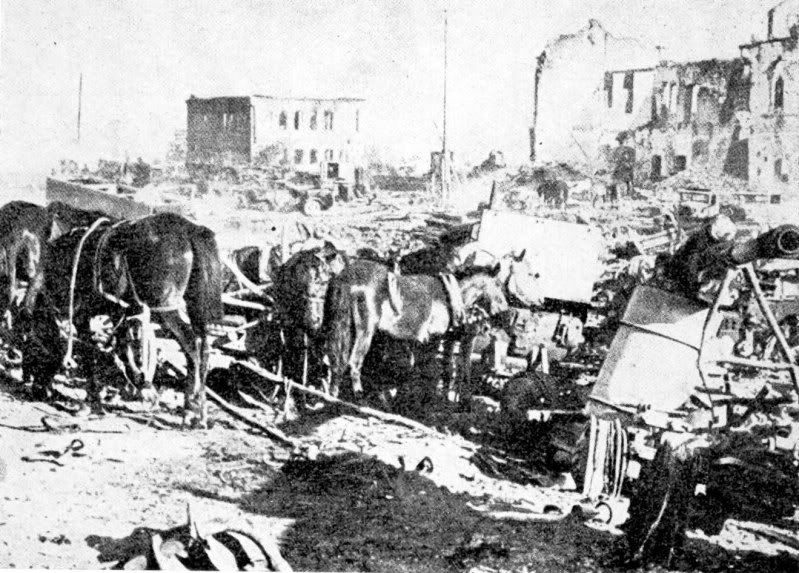
Destroyed artillery pieces and wounded horses – a tremendous cost of War. Smolensk – 1941
Yes, Stuka was able to cause the most horrific war injuries in numbers almost too large to comprehend. But horrors of war are hardly ever considered objects of premeditated philosophy of conflict… 
I would indeed like to know more about the upgraded Stukas and their use as “tank-busters” on the Eastern Front.
I am doing my best to find something for you, my dear Mr. Nickdfresh. I hope that some previously unseen snapshots connected with the aforementioned matter will be available as well. 
The answer to such low level tactics? Flak towers
I really don’t want to be a Killjoy, my dear Mr. Smith, but the good old Soviet Il 2 Sturmoviks actually proved that the aforesaid constructions were not the unconquerable technical solutions for sufficiently determined and properly trained crews, prepared to successfully use a deadly combination of simultaneous high-angle attack from different directions, and browny power of the ROFS-132 rockets.

Destroyed heavy Flakturm-Zwilling, Berlin – May 1945
In addition - although this thread is not dedicated to this highly intriguing question! - I shall say that the only practically impenetrable all-round AA area defense system on the whole planet was established around the Soviet capital in 1944. A true mathematical genius designed it, and it was extremely expensive. But, as already explained, this issue is representing a proper them for a completely new thread. 
Well, that’s all for today, honorable ladies and gentlemen. I have to proceed with my regular work. :roll:
In the meantime, as always – all the best! 
[QUOTE=Librarian;158156]As usually, I am late again, honorable ladies and gentlemen. Nevertheless, I shall try to compensate that sorrowful verity with a pair of forgotten pictorial artifacts. 
Never say you are late Mr. Librarian!! Your posts are most welcomed!
Gentlemen
i wonder if you can help?
Lucas an excellent model builder is looking for info on a particular late war scene.
The astute amongst you will
(a) recognise the photos in the set of links below
(b) know where the rest or other source of images from this scene are?
I have recently had to rebuild my PC some some of my image files are all messed up or lost!
But i certainly recall these images and the following!
The Ju-87 in front of the shed/barn appears as follows
- in colur
- from an angle taken from the side of the second link below (of the second me-262 in the main image)
- addtional photos from differnet angles of the Ju-98 and me-262
I include the link to the pivitol Ju-87 image and one that include the afore mentioned ju-87 in the back ground of the me-262 shot.
There is a i am sure at least one or two other photographs taken of this scene and both the ju-8 and me-262 from various angles and vantage points at this time.
I am not sure of the exact location some say its Innsbruck others nearby landzberg (nr dacheau?)
it is certainly in Alpine Germany or Austria…
does anyone have any more information or photographs ?
i see this as bit like the series of images of the wrecked panther outside Cologne / Koln catherderal?
many thanks
BD99
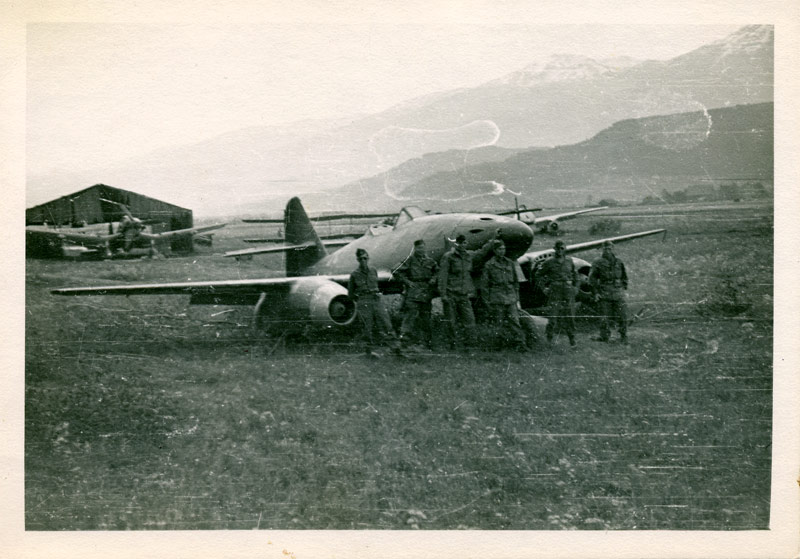
http://www.tegernseer-tal-verlag.de/content/spurensuche/galland/pictures/me262.jpg
I would have to say that the Stuka was a great platform as long as air superiority was not an issue. It was one of the best, if not the best, dive-bombers of the war. It’s accuracy was unparalleled at the time of its introduction, and the automatic pull-out after bomb release was pretty unique. If the Luftwaffe had been able to clear the skies of enemy fighters, I think that the Stuka would have a similar reputation as the Tiger tanks do.
